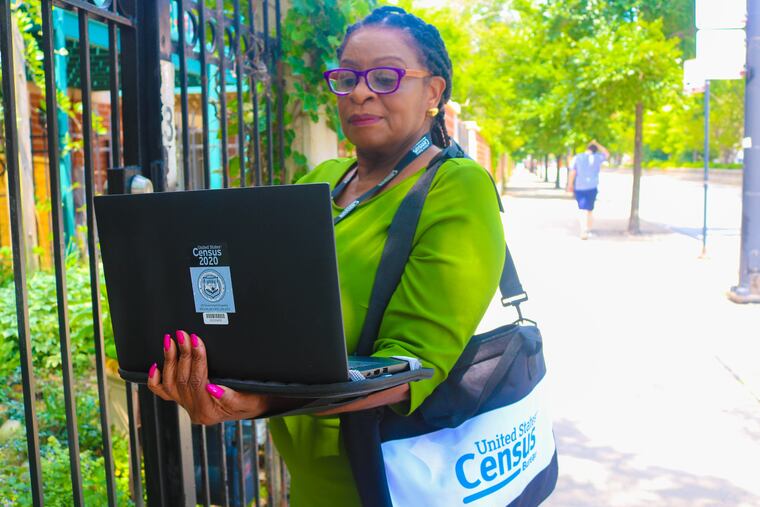2020 Census 'listers’ have to verify millions of addresses. Look for them in your neighborhood.
Starting Monday, more than 100 census workers will be walking through neighborhoods in the Philadelphia area to confirm addresses the Census Bureau needs to conduct the 2020 Census.

Starting next week and continuing into October, you might see people carrying laptops walking through your neighborhood and knocking on doors. They’re what the Census Bureau calls “listers” — census workers charged with making sure the bureau has a complete list of all addresses as it prepares for its massive population count next year.
It’s the first major field operation of the 2020 Census.
In previous census counts, the bureau tasked listers with walking every street in the country to make sure addresses were able to receive mail — 115,000 census workers for the 2010 Census, according to the bureau. Now, the bureau is able to verify 65% of nationwide addresses in-house not only through government records, but also through satellite images and technology not available to the bureau for the 2010 Census.
Steven Dillingham, director of the Census Bureau, said the changes will mean the operation is “more cost-effective and more efficient than ever before.” The number of listers for the 2020 Census — more than 40,000 — is down roughly two-thirds from 2010′s number.
The 2020 Census will be the first for which the bureau is encouraging all residents to fill out the questionnaire online. But the bureau will attempt to communicate with all households — including sending postcards with instructions for responding online — through the mail.
The bureau has been working for the last decade with the U.S. Postal Service and tribal, local, and state governments to compile its master list of addresses. Decennial counts determine the distribution of hundreds of billions of dollars in federal funds to state and local governments, the boundaries of voting districts, and the share of U.S. House seats each state receives.
Starting next Monday, Aug. 19, listers will begin verifying the remaining 35% of addresses that need double-checking, using maps and a list of known addresses on a laptop. Mostly, they will be checking to see whether a basement was turned into an apartment, new housing was built, someone is living in a trailer on a property, or some other new or unconventional living arrangement exists, especially in areas that have seen a lot of growth. (The Census Bureau is alerting local police departments about the address operation.)
Roughly 130 listers throughout the region that includes Philadelphia, the Pennsylvania suburbs, and Wilmington will join thousands of counterparts across the country to verify roughly 50 million addresses. Nationwide, the Census Bureau trained roughly 25,000 listers in one day last week, when training began.
The listers will finish their work by mid-October.
The nine-state area covered by the Census Bureau’s Philadelphia Regional Office includes 10.5 million housing units. The address-canvassing operation in Philadelphia and other cities is smaller than ones in rural areas that have less traditional housing setups.